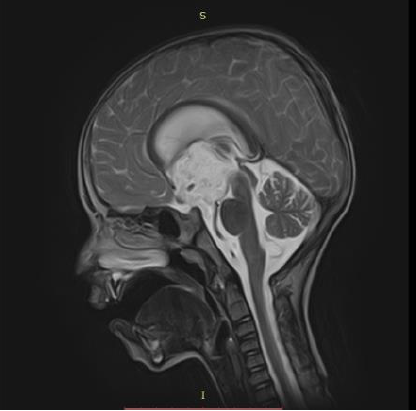Pediatric glioblastoma treated with concurrent radiotherapy and adjuvant Temozolomide: A case study of the treatment of pediatric GBM by the technique of volumetric modulated arc therapy
DOI:
https://doi.org/10.48026/issn.26373297.2021.12.1.4Keywords:
Radiotherapy, pediatric glioblastoma, pGBM, TemozolomideAbstract
Introduction: Glioblastoma in children (pGBM) occurs somewhat less frequently than in adults. Pediatric pGBMs have a different molecular profile than GBM for adults. The aim of the presentation of this case is the possibility of the effectiveness of the GBM radiation method and the evaluation of magnetic resonance imaging, and the monitoring of the treatment outcome of the patient.
Material and methods: The case study is of the retrospective-prospective type. Medical documentation, magnetic resonance imaging, and chronologically monitored evaluation of the findings from November 2018 to August 2021 were used to present the study. The postoperative course was analyzed, as well as the effect of concurrent chemoradiotherapy, VMAT radiotherapy and adjuvant chemotherapy with Temozolomide in a patient aged 4 years and 6 months, comparing treatment outcome with median and overall survival in glioblastoma.
Results: The pediatric patient after being diagnosed with high-grade glioma in 2018 is so far in very good general condition, without signs of physical and psycho-social defects, which compared to the scientifically proven median of survival indicates a good therapeutic effect. Volumetrically modulated arc radiotherapy with the use of modern IGRT verification techniques and with the use of chemotherapy with Temozoloimod, has proven to be a still effective oncological method treatment of GBM. For the final outcome of the disease and the effect of therapeutic modalities, the patient's condition and evaluation of magnetic resonance imaging will be monitored. The result supports further research into this therapeutic regimen.
Conclusion: Glioblastoma is a very aggressive tumor, which occurs somewhat less frequently in the pediatric population than in adults, but is a very fatal disease. Surgical resection followed by concurrent chemoradiotherapy, with adjuvant Temozolomide is still the method of choice in the treatment of glioblastoma.

Downloads
Published
How to Cite
Issue
Section
License
Copyright (c) 2021 Enis Tinjak, Velda Smajlbegović, Mirjana Ristanić, Nusret Salkica, Halil Ćorović, Lejla Altumbabić

This work is licensed under a Creative Commons Attribution 4.0 International License.
Copyright & licensing:
This journal provides immediate open access to its content under the Creative Commons CC BY 4.0 license. Authors who publish with this journal retain all copyrights and agree to the terms of the above-mentioned CC license.



